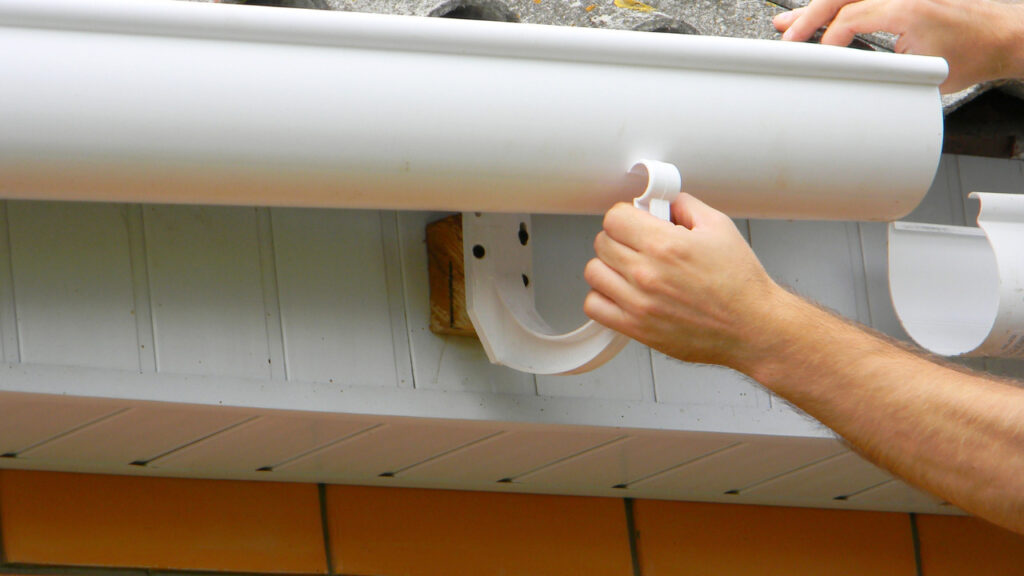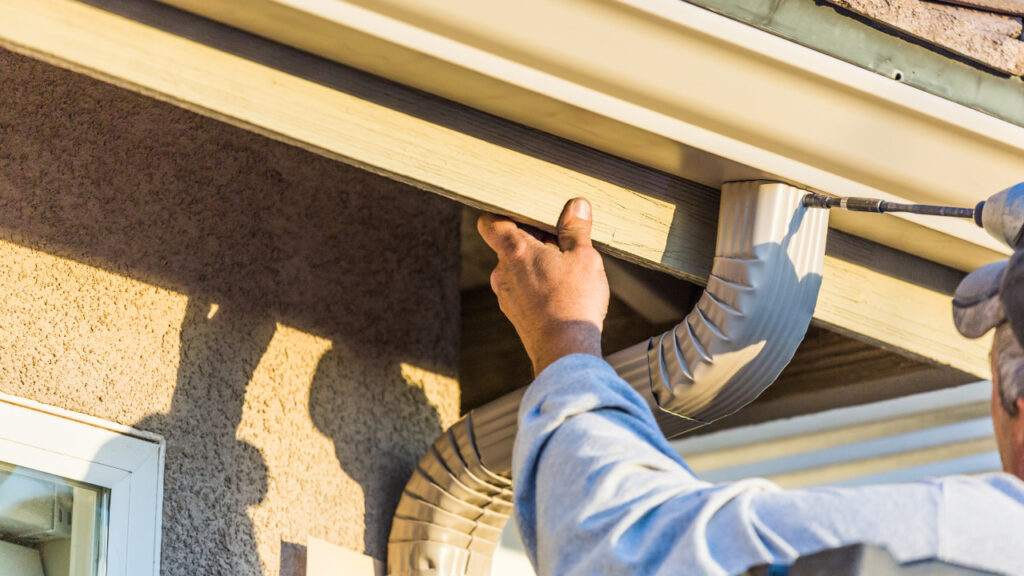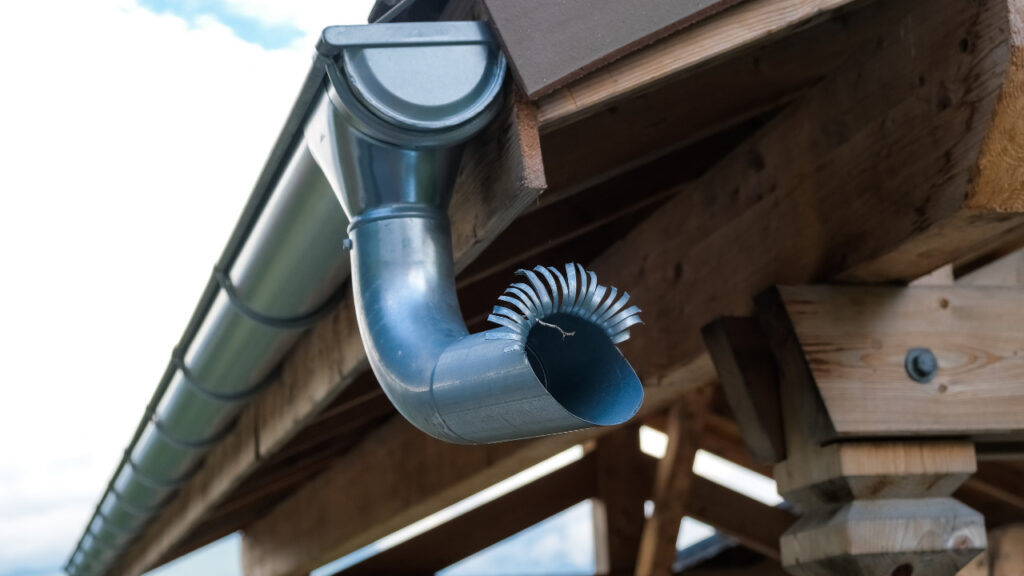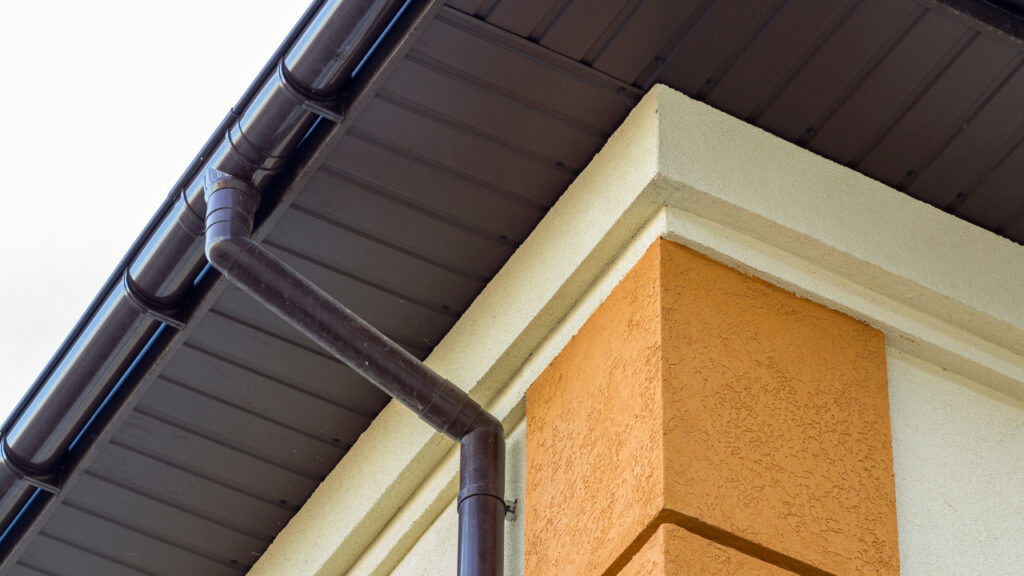Rain gutters are designed to direct or channel the rainwater away from the roofline. Therefore, rain gutters installation is essential investment for a home. It diverts the direction of rainwater to maintain the integrity and appeal of your home.
In most of the homes, the downspouts and rain gutters play a major role in not clogging the rain water. Without them the the soil around them will erode and slide causing leakage. Most homeowners prefer to install rain gutters with the help of professionals. But with the right tools and techniques, you can work on rain gutter installation yourself to save your basements and foundation walls from leakage.
In this guide, we will walk you through each step needed to install rain gutters without putting in too much time and effort.
Table of Contents
What are Rain Gutters and Its Components
Rain gutters are hollow devices attached to the roof edges or channel through the rooflines to catch rainwater. These gutters also divert the rainwater away from the foundation walls or building. Rain gutter cleaning is important after installation to avoid any over spillage of water.

A rain gutter has the following components:
- A gutter
- End cap
- Fascia bracket
- Downspout
- Downspout bracket
- An Elbow
Roof gutters installation is essential to save your home from overflowing rainwater. Without them, water will remain stagnant on the roofline along with other debris such as leaves and twigs. Water overflowing and settling on the roof will weaken your roof’s structure.
9 Steps to Install Rain Gutters
If your house do not have the gutter drainage system, rainwater will come off roofs damaging the soil. Or maybe the drain blockage is a severe due to poor gutters. So, before starting work on the rain gutters installation process, ensure to collect all needed tools and materials, including;
- A tape measure
- A ladder
- Miter saw
- Nose pliers
- Ladder brackets
- Pop rivet gun
- Power drill
- Drill bits
- Hole saw bit
- Aviation snips
Once you have collected all tools, set them in the chronological order to begin the installation process.
1) Measure the Roof Size

Installing gutter system is the part of the roofing safety so that no further damage get to the fascia either. Measuring the roof size is the first and most important step for rain gutters installation. It is important because you must attach the rain gutters to the fascia and run the entire roof length, ending with a downspout.
You can measure the roof length or size with a tape measure to buy the right and only needed gutter materials.
2) Buy Gutter Materials

You can buy rain gutters installation material from any Home Depot or local hardware store. Make sure to buy some additional materials to save yourself from any inconvenience during installation. You can opt to install copper gutters because they are long lasting.
Ensure to choose the right size gutter according to the size of your roof. You can also use an online gutter size calculator if you don’t know how to choose the right size gutter.
3) Mark Rain Gutters Starting and End Points

Use a chalk line or marker to mark rain gutters’ starting and endpoints. It would be best to nail over the marked points rather than using a chalk line for better considerations. You can also attach a string to mark from starting to endpoint.
4) Install Fascia Brackets

Look behind the fascia on roof for the rafter tails. On the tail of each other rafter, make a mark with the chalk line. At each location, drill a pilot hole through the fascia and into the rafter tail. You can also use stainless steel lag screws to fasten the fascia brackets to the rafters.
5) Cut Gutters to Appropriate Length
You can use a hacksaw to cut rain gutters according to the measured size of your roof. If the gutters are still inappropriately cut, you can cut additional material at an appropriate angle from the end. Now, it’s time to attach end caps by using pop rivets.
Once you have installed the end caps, it’s time to remove the temporary screw and replace it with pop rivets. It would be best to use silicone caulk to seal the end caps from the inside of the gutters.
6) Install Downspout on Low End

Once you have installed end caps, it’s time to install the downspout outlet on the low end of the gutter. For this, you have to turn the gutter upside down. Place the downspout outlet on the top of the upside-down gutter’s low end.
Use a hole saw or hacksaw to cut the downspout hole.
7) Mount Rain Gutters

Insert the gutters into the fascia’s lag-screwed brackets. Ensure to rotate the side of the gutter upward to fit it into the installed hooks at the top of the brackets. Use a drill bit to drill a hole in each bracket to mount each gutter’s edge with brackets.
Use stainless steel screws and a flanged nut to secure the gutter to the bracket. To improve the home’s curb appeal, you can also paint the gutters and install brackets with the same color or contrasting paint.
8) Use a Strip-Miter to Cover Gutter Corners

Using a form strip-miter, you can cover the joining points of the gutters’ corners. For this, you have to wrap the aluminum strip tightly around the underside of the gutter. It would be best to use a high-quality silicon caulk to make this strip-miter joint more waterproof.
9) Mount Downspout Elbow to the Outlet Tube

Once you have installed and caulked rain gutters, it’s time to connect the downspout outlet to the gutter with stainless steel screws. You can use a nose plier to fix the downspout elbow into the downspout. Secure all the mounted parts with screws.
You can use more than two downspout brackets to fasten a two-story building better.
5 Factors That Affect Rain Gutters Installation Cost

Some of the important factors affecting the gutter cost are explained as follows.
1. Home Size
This is not a surprise when it comes to installing rain gutters. The larger a home is the more gutter installation cost will be. Gutters are charged by the foot, so if more downspouts are required it will increase the material cost.
Plus it will affect the labor cost as well, as more workers will be required.
2. Cost of Labor
Labor cost for gutter installation vary demographically. Some regions are more expensive than the others. Hiring a licsenced contractor will increase the cost of the service required. Its recommended to get bids from multiple contractors instead of relying only on one. You can allocate the right budget for the contractor team. So it might be better in the long run if you pay a bit more for the more experienced professionals.
3. Gutter Type
Traditional sectional gutters way less. They have separate segments that are attached at the time of installation. Some homeowners opt for seamless gutters because they are customized according the house size, hence the reason for being more costly.
If you opt for the latter option, you can save some money on the maintenance cost in the future. They are excellent in preventing the leaks and clogs.
4. Gutter Material
Vinyl, galvanized, aluminum and copper gutters are some of the most popular gutter materials available in the market.
Vinyl gutters are the cheapest of them all but arent suitable for cold weathers. They will break easily. Galvanized gutters are stronger in comparison with a higher rate than vinyl gutters.
Aluminum gutters are rather popular choice for several homeowners due to their fair durability. Also, they are rust-proof no matter the reason. But if you do not want to take any chances, copper cutters are premium choice all year long. Once properly installed they will even go with the home exterior. However each type of gutter material cost varies.
5. Gutter Depth
most rain gutters are 4 or 6 inched deep. They can survive a moderate perspiration. But if you live in a region with heavy amount of snow or rainfall, consider installing with gutter depts of around 7 or 8 inches.
How Much Rain Gutters Installation Costs
The installation cost varies according to home size, gutters size, downspout pitch, and local building codes.
Gutter installation cost for a 200 linear feet will cost you around $800 – $6,000. Per linear foot cost is $4 – $30.
If you have a single story house, the average gutter installation cost will be at least $2,300. If using copper cutters, it will cost around $3,000 – $6,000.
If choosing to install vinyl gutters it will cost around $800 – $1,400 which is a lot less as compared to copper gutters.
Hiring an inspection team would be best if you don’t know how to measure the roof gutter installation cost.





